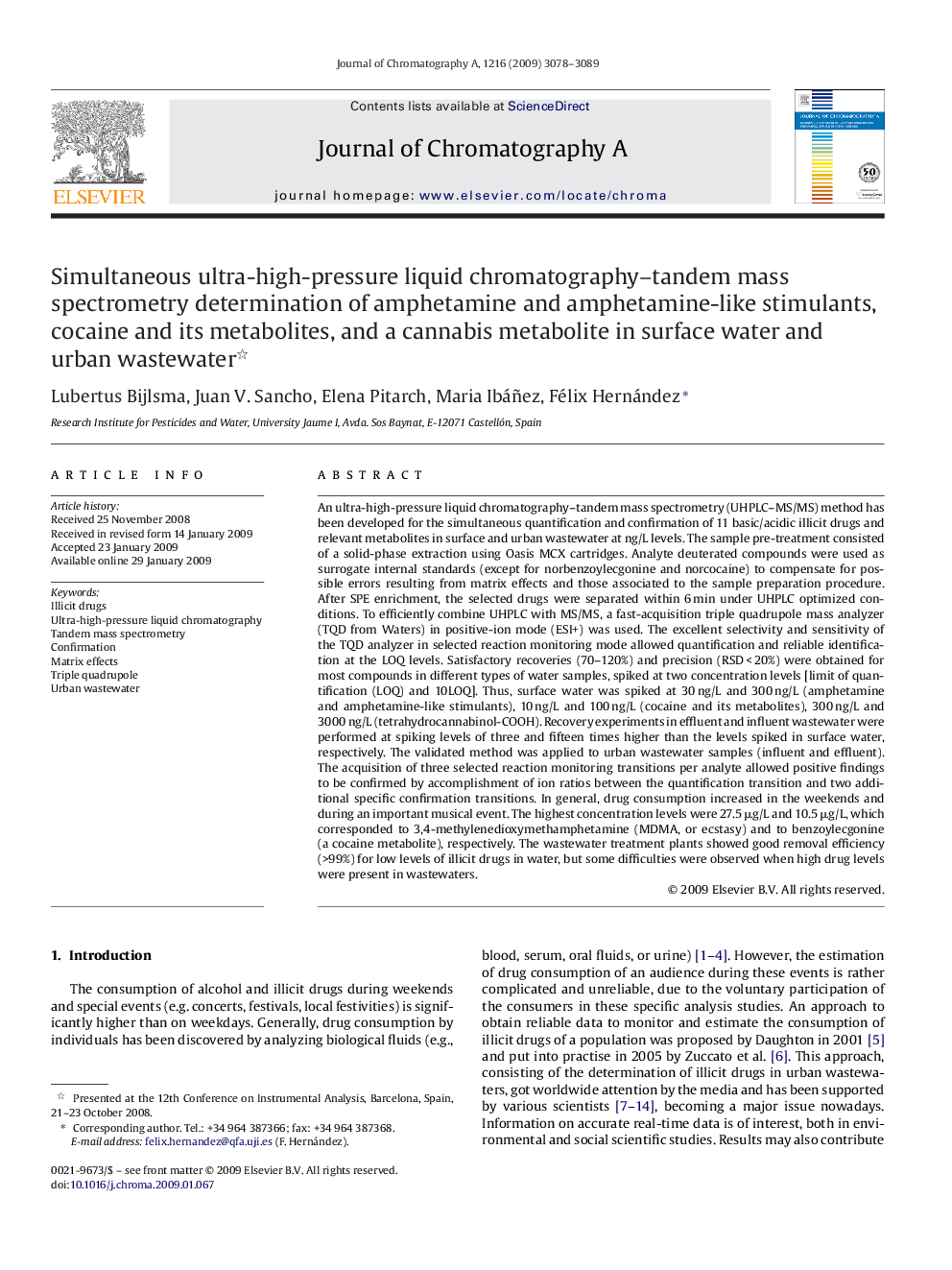| کد مقاله | کد نشریه | سال انتشار | مقاله انگلیسی | نسخه تمام متن |
|---|---|---|---|---|
| 1204459 | 965155 | 2009 | 12 صفحه PDF | دانلود رایگان |

An ultra-high-pressure liquid chromatography–tandem mass spectrometry (UHPLC–MS/MS) method has been developed for the simultaneous quantification and confirmation of 11 basic/acidic illicit drugs and relevant metabolites in surface and urban wastewater at ng/L levels. The sample pre-treatment consisted of a solid-phase extraction using Oasis MCX cartridges. Analyte deuterated compounds were used as surrogate internal standards (except for norbenzoylecgonine and norcocaine) to compensate for possible errors resulting from matrix effects and those associated to the sample preparation procedure. After SPE enrichment, the selected drugs were separated within 6 min under UHPLC optimized conditions. To efficiently combine UHPLC with MS/MS, a fast-acquisition triple quadrupole mass analyzer (TQD from Waters) in positive-ion mode (ESI+) was used. The excellent selectivity and sensitivity of the TQD analyzer in selected reaction monitoring mode allowed quantification and reliable identification at the LOQ levels. Satisfactory recoveries (70–120%) and precision (RSD < 20%) were obtained for most compounds in different types of water samples, spiked at two concentration levels [limit of quantification (LOQ) and 10LOQ]. Thus, surface water was spiked at 30 ng/L and 300 ng/L (amphetamine and amphetamine-like stimulants), 10 ng/L and 100 ng/L (cocaine and its metabolites), 300 ng/L and 3000 ng/L (tetrahydrocannabinol-COOH). Recovery experiments in effluent and influent wastewater were performed at spiking levels of three and fifteen times higher than the levels spiked in surface water, respectively. The validated method was applied to urban wastewater samples (influent and effluent). The acquisition of three selected reaction monitoring transitions per analyte allowed positive findings to be confirmed by accomplishment of ion ratios between the quantification transition and two additional specific confirmation transitions. In general, drug consumption increased in the weekends and during an important musical event. The highest concentration levels were 27.5 μg/L and 10.5 μg/L, which corresponded to 3,4-methylenedioxymethamphetamine (MDMA, or ecstasy) and to benzoylecgonine (a cocaine metabolite), respectively. The wastewater treatment plants showed good removal efficiency (>99%) for low levels of illicit drugs in water, but some difficulties were observed when high drug levels were present in wastewaters.
Journal: Journal of Chromatography A - Volume 1216, Issue 15, 10 April 2009, Pages 3078–3089